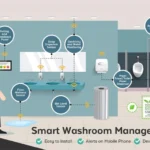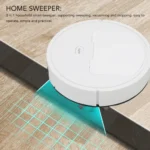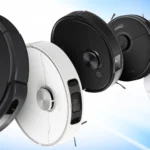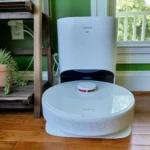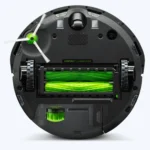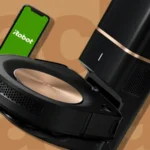Are you tired of manually cleaning your floors? Want a smarter solution? Look no further than a smart vacuum cleaner. With their impressive technology, these machines can navigate your home, detect dirt and debris, and make your floors spotless. However, not all smart vacuum cleaners are created equal – choosing the right one for your home’s specific floor type is crucial. In this article, we will explore the importance of floor type when choosing a smart vacuum cleaner, as well as considerations for hardwood, carpeted, and tile floors. Additionally, we will discuss features to look for in a smart vacuum cleaner, tips for maintenance, and more. Let’s dive in and find the perfect smart vacuum cleaner for your home!
Understanding Floor Types
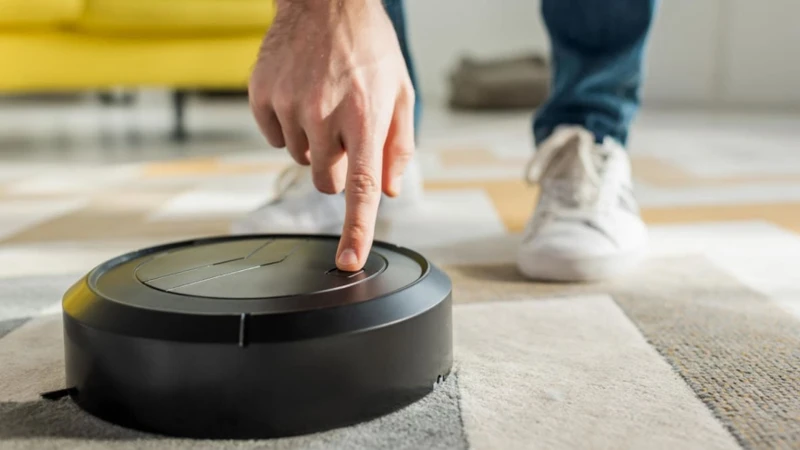
It can be perplexing to understand why the type of floor you have matters when choosing a smart vacuum cleaner, but it’s an integral aspect to consider. Smart vacuums come with a variety of features, but not all of them are suitable for every floor type. For instance, a vacuum that excels on hardwood floors may not necessarily be the best option for carpets. Knowing the different types of floors and the effect they have on cleaning can greatly improve your experience and your cleaning results. In this section, we will discuss the different types of floors and why choosing the right smart vacuum cleaner for your specific floor type is critical for optimal cleaning performance.
The Different Types of Floors
When it comes to choosing a smart vacuum cleaner, it’s important to consider the different types of floors that you have in your home. Each type of flooring has different aspects to keep in mind, such as texture and amount of dust and debris. Here are some of the most common types of flooring and how they can impact your choice of smart vacuum cleaner:
| Floor Type | Description |
|---|---|
| Hardwood | Hardwood floors can scratch easily, so it’s important to choose a smart vacuum cleaner that has soft bristles or rubber wheels to avoid any damage. |
| Carpeted | Carpeted floors can trap a lot of dust and debris, making it important to have a smart vacuum cleaner with adequate suction power and the ability to pick up pet hair. |
| Tile and Linoleum | These types of floors can be slippery when wet, so it’s crucial to choose a smart vacuum cleaner that can effectively clean up any spills or messes quickly to avoid any safety hazards. |
Understanding the needs and requirements of your floors is the first step in choosing the right smart vacuum cleaner for your home. If you have hardwood floors, for example, you may want to consider a vacuum with special features specifically designed for that type of flooring. For more information on the best smart vacuum for each type of flooring, click on the appropriate anchor: hardwood floors, carpeted floors, tile and linoleum floors.
Taking the time to understand your floor type can save you money in the long run and provide optimal cleaning efficiency with your smart vacuum cleaner. Additionally, knowing how to properly maintain your vacuum cleaner will ensure its longevity, no matter the floor type. For more information on the benefits of smart vacuums for floors, check out this article.
Why Floor Type Affects Cleaning
The type of flooring in your home can greatly affect the effectiveness of your smart vacuum cleaner. Each type of floor has its own unique characteristics which must be taken into consideration when choosing the right vacuum cleaner for your home. Here are some reasons why floor type can affect cleaning:
- Texture: Hardwood floors have a smooth texture, while carpets have a fluffy and soft texture. By not choosing the right vacuum cleaner for a specific type of floor, there is a possibility that the vacuum might not be able to pick up all the dirt or dust particles.
- Suction: Depending on the type of floor, the suction power that your smart vacuum cleaner produces is incredibly important. Hardwood floors typically require less suction power compared to carpets or rugs. Not having the necessary suction power can result in dust particles being left behind, degrading the overall cleaning performance of your vacuum.
- Hair and small debris: Different floor types vary in the degree to which it can accumulate hair and small debris such as crumbs, dirt or sand. Carpets, for instance, have a tendency to accumulate hair and fine dust that is pushed down deep into the carpet pile. Special attention and powerful suction may be required to effectively clean deep on carpets
When discussing the importance of floor types when choosing a smart vacuum cleaner, it’s crucial to take into account these differences. Selecting the right vacuum cleaner based on your floor type can drastically improve your cleaning experience while also improving the longevity of both your floors and vacuum cleaner.
Choosing the Right Smart Vacuum Cleaner
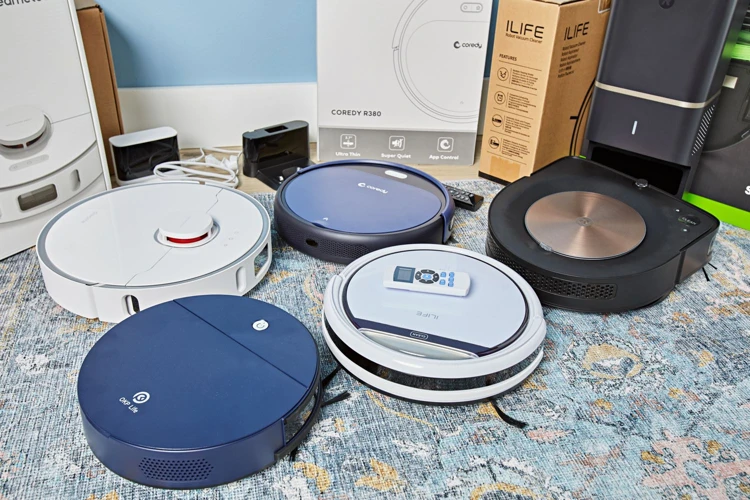
Choosing the perfect smart vacuum cleaner can be a daunting task, especially with the vast array of options available in the market today. However, taking into account the types of floors in your home is crucial in making the right decision. Not all smart vacuums are created equal, and some are better suited for specific floor types than others. In this section, we’ll delve into what you should consider when choosing a smart vacuum cleaner for your specific floor surfaces. Understanding your floor type ensures that you make an informed decision when choosing your smart vacuum cleaner. Let’s take a closer look. If you want to refresh your knowledge about importance of floor type for smart vacuums, you can visit this article.
Considerations for Hardwood Floors
When it comes to hardwood floors, you want to make sure your smart vacuum cleaner is gentle enough to avoid scratching your floors. Here are some considerations to keep in mind when choosing a smart vacuum cleaner for hardwood floors:
| Consideration | Details |
|---|---|
| Power Settings | Look for a smart vacuum cleaner that allows you to adjust the suction power to a lower setting when cleaning hardwood floors. This will help prevent any damage that could be caused by too much suction power. |
| Brush Rollers | Opt for a vacuum cleaner that has a brush roller with soft bristles or none at all. This will help avoid any scratches or damage when cleaning hardwood floors. |
| Weight | Choose a lightweight smart vacuum cleaner as it will help reduce the chances of the vacuum cleaner causing any dents or scratches on your hardwood floors. |
| Height Adjustment | Smart vacuum cleaners that come with a height adjustment feature will ensure that the vacuum is not dragging along the floor and potentially causing damage. |
| Filtration System | Choose a smart vacuum cleaner that has a good filtration system to avoid blowing dust or debris back onto your hardwood floors. |
Another important thing to keep in mind is to regularly check the wheels and casters of your smart vacuum cleaner. Make sure they are free of any debris that could scratch your floors. By choosing a smart vacuum cleaner with these considerations in mind, you can keep your hardwood floors looking clean and scratch-free.
If you want to know more about smart vacuum cleaners for hardwood floors, you can check this article for more information.
Considerations for Carpeted Floors
When choosing a smart vacuum cleaner for your carpeted floors, there are several things to keep in mind. Here are some considerations to ensure you pick the right one.
- Brush Roll: Look for a smart vacuum cleaner with a motorized brush roll to agitate and lift dirt and debris from your carpet fibers. Some models also have adjustable brush heights to accommodate different carpet heights.
- Suction Power: A strong suction power is essential for a smart vacuum cleaner to effectively clean carpets. Look for a model with powerful suction, and consider adjustable suction settings for cleaning different carpet types.
- Filtration: Carpeted floors can trap dust and allergens, so it’s important to choose a smart vacuum cleaner with high-efficiency filtration. HEPA filters are a great option, as they capture even the smallest particles.
- Size and Design: Consider the size and design of the vacuum cleaner. A bulky model may have difficulty maneuvering around furniture and tight spaces. Look for a slim and compact model that can easily navigate your carpeted floors.
- Noise Level: Carpeted floors can sometimes amplify noise, so it’s important to choose a smart vacuum cleaner that operates quietly if you prefer carpets that don’t disturb your peace.
- Price: Consider your budget when choosing a smart vacuum cleaner for your carpeted floors. Some models can be quite expensive, while others offer more value for your money.
By considering these factors, you’ll be able to choose a smart vacuum cleaner that can effectively and efficiently clean your carpets, leaving them looking and feeling like new. Keep in mind that regular maintenance, such as cleaning the brushes and filters and emptying the dustbin, will ensure your smart vacuum cleaner continues to work effectively over time.
Considerations for Tile Floors
If you have tile floors in your home, then you may already know that keeping them clean can be a real challenge. A smart vacuum cleaner can certainly make this task easier, but there are some considerations that you need to keep in mind when choosing a model that is suitable for your tile floors.
1. Suction Power: Tile floors tend to accumulate a lot of dirt, dust, and debris. As such, you want to choose a smart vacuum cleaner that has strong suction power to remove even the most stubborn dirt and debris from your tile floor.
- Look for models that offer multiple suction levels, with a high-power mode for heavy-duty cleaning.
- A strong suction also comes in handy if you have grout lines in between your tiles, as this tends to trap dirt and debris.
2. Brush Roll: When it comes to tile floors, you want to avoid using a brush roll that can scratch or damage your tiles.
- Look for models that use rubberized brush rolls or soft bristles that are gentle on your tiles.
- You might also want to consider a model that allows you to turn off the brush roll altogether, especially if you have mostly smooth tiles without deep grout lines.
3. Mop Feature: Some smart vacuum cleaners come with a mop feature, which can be particularly helpful for cleaning tile floors.
- A mop feature allows the vacuum cleaner to both pick up debris and dirt while also mopping your tile floors, leaving them looking shiny and clean.
- You might also want to check if the mop feature comes with adjustable water flow, as too much water on your tiles could cause damage over time.
4. Navigation: Tile floors tend to have a lot of obstacles, such as kitchen islands or bathroom vanities, that may require the vacuum cleaner to navigate around.
- Look for models that have advanced navigation features, such as laser mapping or room recognition, to make sure your vacuum cleaner can navigate easily and efficiently around your tile floors.
5. Size and Design: Tile floors can vary in size and surface area, so you want to make sure the vacuum cleaner you choose can cover the space you need.
- Look for models with a large dustbin capacity, so you don’t have to stop and empty it frequently.
- Also, consider the size and shape of the vacuum cleaner when it comes to storage – you don’t want it to be too bulky or difficult to store when not in use.
By keeping these considerations in mind, you can choose the right smart vacuum cleaner for your tile floors that will help you keep them looking clean and beautiful for years to come.
Considerations for Pet Hair on Floors
If you are a pet owner, then finding a smart vacuum cleaner that can handle pet hair is essential for maintaining a clean home. Here are some considerations to keep in mind:
- Strong Suction: Look for a smart vacuum cleaner with strong suction power. This will help to lift and remove pet hair from your floors and carpets.
- HEPA Filters: Consider a vacuum equipped with HEPA filters, which are designed to trap pet dander, dust, and other allergens that pets can leave behind.
- Tangle-Free Brushes: Choose a smart vacuum cleaner with tangle-free brushes to minimize clogging and tangles caused by pet hair.
- Large Dustbin: A vacuum cleaner with a large dustbin is ideal for homes with pets, as it can collect large amounts of hair and debris without needing to be emptied as frequently.
- Compatibility with Smart Home Devices: If you have a smart home device, consider choosing a smart vacuum cleaner that is compatible with it. This allows you to control the vacuum using voice commands, which is handy when cleaning up pet hair.
By considering these features when choosing a smart vacuum cleaner for pet hair, you can ensure that you are getting a tool that can handle your pet’s shedding and help you maintain a clean and healthy home.
Additional Features to Look For
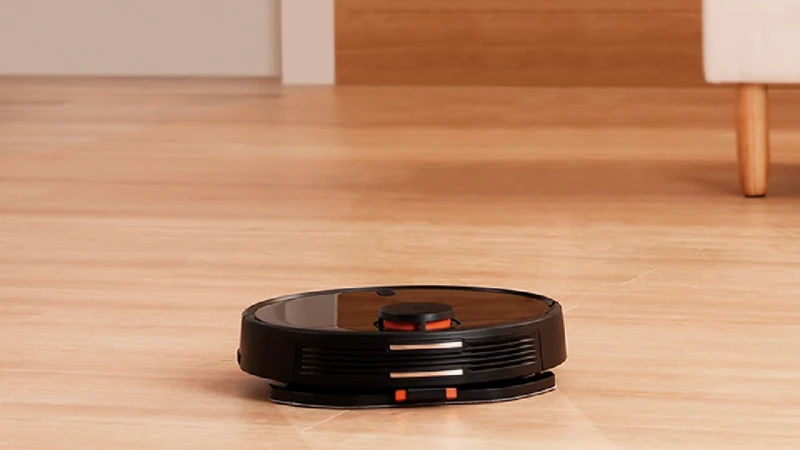
When it comes to choosing the right smart vacuum cleaner, it’s not just about the type of floors in your home. There are also additional features that can make all the difference in achieving clean floors with minimal effort. From navigation technology to battery life, it can be perplexing navigating all the available options. But fear not, we’ve highlighted some of the important features to look for when choosing a smart vacuum cleaner. So, let’s dive in and discover what else you should consider before making a purchase.
Navigation and Mapping
When it comes to choosing a smart vacuum cleaner, navigation and mapping features are essential to consider. These features allow the vacuum cleaner to move around your home intelligently, efficiently, and avoid obstacles.
One key feature to look for is LIDAR (Light Detection and Ranging), which uses lasers to map out the room and create a floor plan. Some vacuum cleaners use camera-based mapping systems that take pictures of the room to create a detailed map. These mapping technologies allow for efficient cleaning and the ability to create virtual boundaries for your vacuum cleaner to follow.
Another important feature is intelligent navigation which enables the vacuum cleaner to memorize the structure of your home and to avoid obstacles such as furniture, stairs, and walls. Some models also come equipped with real-time obstacle detection systems that can detect and avoid furniture or pets that may be in the path of the vacuum.
Here is a table highlighting some of the navigation and mapping features to look for when choosing a smart vacuum cleaner:
| Feature | Description |
|---|---|
| LIDAR | Uses lasers to map out the room and create a floor plan |
| Camera-Based Mapping | Takes pictures of the room to create a detailed map |
| Virtual Boundaries | The ability to create boundaries for your vacuum cleaner to follow |
| Intelligent Navigation | Memorizes the structure of your home and avoids obstacles like furniture, stairs, and walls |
| Real-Time Obstacle Detection | Detects and avoids furniture or pets that are in the path of the vacuum |
By considering navigation and mapping features, you’ll ensure that your smart vacuum cleaner can clean thoroughly and efficiently, while avoiding obstacles and minimizing the chances of getting stuck or falling off the stairs.
Dirt Detection Technology
Smart vacuum cleaners with dirt detection technology can change the way you clean your floors. This technology allows the vacuum cleaner to detect areas with more dirt and debris, and it adjusts its cleaning power accordingly. This is especially useful for high-traffic areas, such as entryways or living rooms, where dirt and debris can accumulate quickly.
Here are some of the benefits of dirt detection technology:
- Efficient Cleaning: Rather than vacuuming randomly or following a preset pattern, the vacuum cleaner uses sensors to detect and focus on areas with more dirt or debris. This means that it cleans more efficiently and can pick up more dirt in a shorter amount of time.
- Thorough Cleaning: Dirt detection technology ensures that no patch of dirt or debris is left behind. This is especially useful for pet owners, as pet hair can often accumulate in certain areas of the home.
- Time-Saving: Not only does dirt detection technology ensure a thorough cleaning, but it also saves you time in the long run. You won’t have to go over the same area multiple times, as the vacuum cleaner will clean it properly on the first go.
- Longer Battery Life: By focusing its cleaning power on areas with more dirt and debris, the vacuum cleaner doesn’t waste battery power on areas that are already clean. This extends the battery life and allows you to clean for longer periods of time.
Dirt detection technology is a must-have feature in any smart vacuum cleaner. It ensures efficient, thorough cleaning while saving time and battery power. When choosing a vacuum cleaner, make sure it has this feature to get the most out of your cleaning routine.
Battery Life and Runtime
When it comes to choosing a smart vacuum cleaner, one of the essential considerations to keep in mind is the battery life and runtime. It’s important to choose a vacuum that has a powerful and long-lasting battery life to ensure that it can clean your entire home without needing a recharge.
The battery life and runtime of a smart vacuum cleaner can vary depending on the model and brand. Some models may have a battery life of only 30 minutes, while others can last for up to 120 minutes. It’s essential to consider the size of your home and the frequency of use to determine the appropriate battery life.
To make it easier for you to compare different models, we have created a comparison table of some popular smart vacuum cleaners based on their battery life and runtime:
| Vacuum Cleaner | Battery Life | Runtime |
|---|---|---|
| iRobot Roomba 980 | 120 minutes | 90 minutes |
| Ecovacs Deebot N79S | 100 minutes | 70 minutes |
| Shark IQ | 90 minutes | 60 minutes |
It’s important to note that the runtime may differ from the battery life depending on the type of flooring and the amount of dirt and debris. For example, a vacuum cleaner that is cleaning a large area of carpet may have a shorter runtime due to the amount of suction power required. Whereas, a vacuum cleaner cleaning a smaller area of hardwood flooring may have a longer runtime.
In addition to battery life and runtime, it’s also important to consider the charging time for the vacuum cleaner. Some models may take longer to recharge, which can be inconvenient if you need to use the vacuum cleaner frequently.
It’s important to choose a vacuum cleaner that has a battery life and runtime that is suitable for your needs. Consider the size of your home and the type of flooring to determine the appropriate battery life and runtime. Additionally, check the charging time and if the vacuum cleaner has any additional features that could impact the battery life, such as dirt detection technology.
Size and Design
When it comes to purchasing a smart vacuum cleaner, the size and design of the device are important factors to consider. Not only does the size and shape of the vacuum cleaner determine its ability to clean hard-to-reach areas, but it also plays a role in how it fits in with your home’s decor.
Size: Smart vacuums come in various sizes, from compact models to larger, bulkier options. The size of the vacuum you choose will largely depend on the size of your home, the number of rooms you need to clean, and the storage space you have available.
If you have a smaller home or apartment, a compact smart vacuum cleaner may be the best option for you. These vacuums are lightweight, easy to maneuver and store, and are perfect for cleaning tight spaces. However, if you have a larger home or need to clean multiple rooms, a larger smart vacuum cleaner with a wider cleaning path may be more suitable for you.
Here is a table to help you decide which size smart vacuum cleaner is best for your needs:
| Size of Home | Ideal Vacuum Size |
|---|---|
| Studio or small apartment | Compact (less than 10 inches wide) |
| 1-2 bedroom apartment or small house | Medium (10-15 inches wide) |
| 3+ bedroom house or large living space | Large (15-20 inches wide) |
Design: The design of a smart vacuum cleaner is also an important factor to consider. Smart vacuums are available in a wide range of styles and colors, so you can easily find one that fits your personal taste and matches your decor.
If you have a modern, minimalist home, you may want to choose a smart vacuum with a sleek, streamlined design. On the other hand, if you have a more traditional or eclectic home, a smart vacuum with a unique shape or pattern may be a better fit.
One design feature that can also make a big difference in how easy a smart vacuum cleaner is to use is its control panel. Look for a smart vacuum with clear and easy-to-use buttons or touchscreens that allow you to adjust settings and control the device with ease.
When selecting a smart vacuum cleaner, it is important to take into consideration both the size and design of the device. By choosing the right size and design, you can ensure that your smart vacuum cleaner not only cleans your floors effectively but also adds to the overall look and feel of your home.
Price
When it comes to smart vacuum cleaners, the price range can be quite varied. While some models may be more affordable, others can come with a hefty price tag. However, it’s important to keep in mind that a higher price doesn’t always equate to better quality.
Here are some things to consider when it comes to price:
- Set a budget: Before starting your search for a smart vacuum cleaner, take some time to consider how much you’re willing to spend. This will help narrow down your options and prevent overspending.
- Compare prices: Take some time to shop around and compare the prices of different models that meet your requirements. Sometimes, a lower price can be found by purchasing a preceding model or waiting for seasonal sales.
- Consider the long-term cost: In addition to the initial price, consider the long-term cost of a smart vacuum cleaner. This includes things like replacement parts, maintenance requirements, and energy usage.
- Read customer reviews: Before making a purchase, take the time to read customer reviews to see if the product is worth the price. Keep in mind that sometimes a lower-priced model may have negative reviews or limited functions.
Ultimately, when it comes to buying a smart vacuum cleaner, it’s essential to find a model that best meets your needs and budget. Don’t overspend on unnecessary features but also don’t skimp on important considerations such as the type of floors and additional features.
Tips for Maintaining Your Smart Vacuum Cleaner
Taking care of your smart vacuum cleaner is just as important as choosing the right one for your home. Regular maintenance will not only prolong the life of your device, but also ensure that it is working at its full potential. In this section, we will provide you with some useful tips for maintaining your smart vacuum cleaner, from cleaning the brushes and filters to updating the software. With proper care, your smart vacuum cleaner will keep your floors free from dirt and debris for years to come.
Cleaning the Brushes and Filters
Maintaining your smart vacuum cleaner properly is crucial to ensure its longevity and performance. One of the most important aspects of maintenance is cleaning the brushes and filters regularly.
Brushes: The brushes on your smart vacuum cleaner can easily get tangled up with hair and debris. To prevent this, it’s essential to clean them at least once a week. You can use a pair of scissors or a brush cleaning tool to remove any hair or debris on the brushes. It’s also important to check if the bristles are still intact and replace them if they are worn out.
Filters: The filters in your vacuum cleaner should be cleaned or replaced every 1-3 months, depending on usage. If you have pets or allergies, you might need to clean them more frequently. To clean the filter, simply remove it from the vacuum cleaner and rinse it under cold water. Let it air dry completely before putting it back in the vacuum cleaner. If the filter is damaged, it’s advisable to replace it with a new one.
Here’s a table summarizing the cleaning frequency for brushes and filters based on usage:
| Usage Frequency | Cleaning Frequency for Brushes | Cleaning Frequency for Filters |
|---|---|---|
| Light (1-2 times per week) | Once a week | Every 3 months |
| Moderate (3-4 times per week) | Twice a week | Every 2 months |
| Heavy (daily use) | Daily | Every month |
By following these cleaning guidelines, you can ensure that your smart vacuum cleaner remains in optimal condition and keeps your floors clean and tidy. Don’t forget to check your vacuum cleaner’s manual for specific cleaning instructions and recommendations.
Charging and Storing the Vacuum Cleaner
Once you’ve purchased a smart vacuum cleaner that suits your floor type and other needs, you want to make sure it lasts as long as possible. One key aspect of this is proper charging and storage.
Here are some tips for charging and storing your smart vacuum cleaner:
- Follow the manufacturer’s instructions: Each brand may have slightly different guidelines for charging and storing their product, so always refer to the owner’s manual or online resources specific to your model.
- Charge the battery properly: To ensure optimal performance and lifespan, charge your vacuum cleaner’s battery according to the recommended time and method. Overcharging or undercharging can damage the battery, so pay attention to the charging indicator or use a smart charger with an automatic shut-off.
- Store the vacuum cleaner in a safe place: Store your smart vacuum cleaner in a dry, cool, and secure location where it won’t get bumped or knocked over. This may be a closet, pantry, or storage room with enough space for the unit and its accessories.
- Clean the vacuum cleaner before storage: To prevent any residual dirt, dust, or debris from clogging the filters or brushes, give your smart vacuum cleaner a quick wipe down or empty the dustbin before putting it away.
- Unplug the charger cord: If you’re storing your vacuum cleaner for an extended period, unplug the charger cord from the outlet to avoid any potential fire hazards or power surges.
By following these charging and storage tips, you can help prolong the life of your smart vacuum cleaner and ensure it’s always ready to tackle your floors with ease.
Updating the Software
In today’s age of technology, software updates have become a regular occurrence for many devices, including smart vacuum cleaners. These updates can bring new features, improve performance, and fix bugs. It is important to keep your smart vacuum cleaner’s software up-to-date to ensure it continues to work efficiently. Here are some tips for updating your smart vacuum cleaner’s software:
| Tip | Description |
|---|---|
| Check for Updates Regularly | Most smart vacuum cleaners have a companion app that provides updates. Make sure to check the app regularly to see if there are any available updates. |
| Follow the Instructions | When updating the software, make sure to follow the instructions provided by the manufacturer. Failure to follow the instructions could result in errors or damage to your device. |
| Connect to Wi-Fi | Ensure that your smart vacuum cleaner is connected to a Wi-Fi network before updating the software. This will ensure a stable internet connection and reduce the risk of errors during the update process. |
| Charge the Vacuum Cleaner | Make sure that your smart vacuum cleaner has a full charge before updating the software. This will prevent the device from shutting down during the update process. |
| Allow Sufficient Time | Software updates can take time, especially if they are large. Plan to update your smart vacuum cleaner when you have sufficient time to allow for the update process to complete. |
By following these tips for updating your smart vacuum cleaner’s software, you can ensure that it continues to work efficiently and effectively.
Conclusion
In conclusion, choosing the right smart vacuum cleaner for your home depends on several factors, including the type of floors in your home, whether you have pets, and your budget. It’s essential to understand the different floor types and how they can affect your cleaning routine.
Hardwood floors require a smart vacuum cleaner that won’t scratch or damage the surface. Look for a vacuum cleaner that has soft bristles or rubber wheels that won’t leave marks.
Carpeted floors require a smart vacuum cleaner that can effectively clean deep into the fibers. Look for a vacuum cleaner that has a strong suction power and a brush roll that can pick up dirt and debris from the carpet.
Tile floors require a smart vacuum cleaner that can efficiently clean the grout between tiles without damaging the surface. Look for a vacuum cleaner with a strong suction power and a brush roll that can reach into the narrow crevices.
Pet hair on floors requires a smart vacuum cleaner that has a special attachment for pet hair. Look for a vacuum cleaner with a high suction power and a brush roll specifically designed to pick up pet hair.
When choosing a smart vacuum cleaner, it’s also important to consider additional features such as navigation and mapping, dirt detection technology, battery life, and runtime. A vacuum cleaner with good navigation and mapping can clean your home more efficiently, while dirt detection technology can ensure that no spots are missed.
Maintaining your smart vacuum cleaner is also crucial in ensuring that it lasts long and functions properly. Regularly cleaning the brushes and filters, charging and storing the vacuum cleaner properly, and updating the software are essential tasks in maintaining the longevity of the cleaner.
Overall, investing in a smart vacuum cleaner can save you time and effort in cleaning your home. By considering the different floor types and additional features, you can choose the right smart vacuum cleaner for your home and maintain its functionality for years to come.
Frequently Asked Questions
1. Is it necessary to consider floor type when choosing a smart vacuum cleaner?
Yes, it is important to consider the floor type as it directly affects the cleaning efficiency of the vacuum cleaner.
2. Can a smart vacuum cleaner clean both carpeted and hardwood floors?
Yes, there are smart vacuums that can clean both types of floors, but it is important to choose the right model with settings and brushes suitable for each type.
3. What types of floors are compatible with robotic vacuum cleaners?
Robotic vacuum cleaners can clean any type of floor including hardwood, carpet, tile or vinyl.
4. Should pet hair be a consideration when choosing a smart vacuum cleaner?
Yes, if you have pets, it is important to choose a vacuum with specialized brushes and suction power to effectively clean pet hair.
5. Can smart vacuum cleaners be controlled via smartphone or voice assistants?
Yes, many models of smart vacuum cleaners can be controlled using a smartphone app or by connecting to voice assistants like Amazon Alexa or Google Assistant.
6. What is dirt detection technology and why is it important?
Dirt detection technology uses sensors to detect high-traffic areas and areas with more dirt and debris, enabling the vacuum to concentrate cleaning efforts where it is needed most.
7. What is the average battery life of a smart vacuum cleaner?
Most smart vacuum cleaners have an average battery life of around 90 minutes, although some high-end models can run for up to 3 hours on a single charge.
8. Is it necessary to clean the brushes and filters of a smart vacuum cleaner regularly?
Yes, cleaning the brushes and filters regularly will help keep the vacuum working efficiently and prevent damage from build-up of debris.
9. Do smart vacuum cleaners need software updates?
Yes, software updates can improve the vacuum’s performance and features, so it is advisable to check for updates regularly and install them as necessary.
10. What is the recommended storage method for a smart vacuum cleaner?
It is recommended to store the vacuum in a cool, dry place with enough space to avoid any damage to the vacuum or its components. Always follow the manufacturer’s recommendations for storage.

